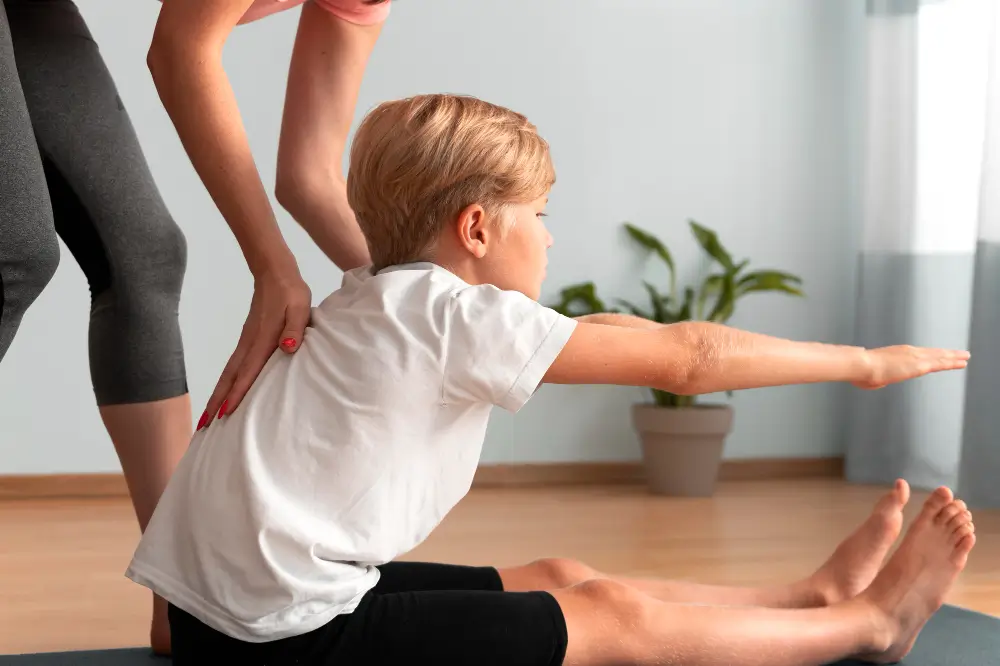When a child skips milestones or struggles with everyday movements, it can raise more questions than answers. Is it just a phase—or something more? Knowing why a child may need physical therapy isn’t always clear. In Why Would a Child Need Physical Therapy? Developmental and Health Challenges, we explore the hidden reasons behind these signs—and what they could mean for your child’s growth and well-being.
Helping little ones move stronger—Schedule pediatric physical therapy in Brooklyn now! 💪👶

Identifying Developmental Delays: When Milestones Aren’t Met
Child motor development follows a sequence of expected milestones used as a reference to assess progress. When a child doesn’t meet these milestones on time, it may indicate a developmental delay that needs specialized attention.
Physical therapy plays a key role in identifying, evaluating, and addressing the challenges that may be affecting a child’s growth and independence.
Signs of Motor Development Delay
Early signs are essential to detect. These common indicators may suggest a need for therapy:
Gross Motor Skills
- Not rolling, sitting, crawling, or walking when expected
- Trouble holding the head up or sitting without support
- Unusual passivity and lack of interest in exploring
- Uncoordinated crawling or walking
Fine Motor Skills
- Difficulty manipulating objects or making precise movements
- Poor hand-eye coordination
- Trouble grasping toys or utensils
Other Notable Signs
- No response to physical stimuli
- Problems with balance or posture
- Frequent irritability or lack of energy
- Persistence of infant reflexes beyond expected age
A detailed motor development evaluation is the first step in therapy. This involves observing movement, assessing muscle tone, checking reflexes, and studying coordination. Based on these observations, the therapist creates a treatment plan tailored to the child’s strengths and needs.
Early intervention through physical therapy can make a major difference. A personalized approach builds skills, encourages independence, and supports the child’s overall development.
Recovering from Injuries: Restoring Function and Mobility
Pediatric physical therapy is essential in helping children recover from injuries. It supports mobility, reduces pain, and strengthens the body so children can return to everyday activities with confidence.
Therapists use techniques that fit each stage of development to address both immediate effects and prevent long-term issues, aiming for full recovery.
How Physical Therapy Helps Recovery
Common techniques include therapeutic use of cold or heat and gentle exercises to ease muscle tension and improve circulation. These methods relieve pain and prepare the body for the next phases of therapy.
As pain decreases, the focus shifts to restoring movement and strength. Therapists use specific stretches and both passive and active mobilizations to improve joint flexibility. Progressive exercises help increase muscle strength and endurance, especially in areas prone to injury.
Rehabilitation aims to help children return to their daily lives without limits. This includes school, sports, and social activities. Emotional support is also part of recovery, helping kids regain confidence and approach healing with a sense of independence and security.
Types of Injuries Treated with Pediatric Physical Therapy
Physical therapy is effective for a wide range of conditions, including:
| Sports Injuries | Fractures, sprains, strains, muscle tears, tendinitis |
| Neuromuscular Disorders | Cerebral palsy, spina bifida, muscular dystrophy |
| Developmental Delays | Trouble sitting, crawling, or walking |
| Orthopedic Conditions | Scoliosis, congenital malformations |
| Postoperative Recovery | After surgery, restoring movement and strength |
With the right care, children can recover successfully and return to their activities with energy and confidence.
Managing Health Conditions: Enhancing Daily Function Despite Challenges
Pediatric physical therapy helps children manage physical conditions that affect their movement, coordination, and overall health. The goal is to overcome these challenges so they can fully engage in daily life.
This kind of therapy improves quality of life, builds independence, and reduces the limits imposed by certain medical conditions.
Therapy focuses on rehabilitation, prevention, and strengthening skills. Here are some areas where it makes a difference:
Psychomotor Development
- Helps children reach milestones like crawling, sitting, walking, and running
- Supports motor development suited to each growth stage
Movement Issues and Disabilities
- Assists children with conditions such as cerebral palsy, spina bifida, and muscular dystrophy
- Improves mobility and independence in daily activities
Injury Recovery
- Speeds up recovery after fractures, sprains, or tears
- Builds strength to prevent reinjury
Respiratory Function
- Enhances lung function in children with respiratory conditions
- Boosts oxygen levels and overall physical ability
With a child-centered approach and personalized care, physical therapy empowers kids with health challenges to build confidence and lead more active, fulfilling lives.
Promoting Overall Well-being: The Comprehensive Benefits of Physical Therapy
Pediatric physical therapy brings long-lasting benefits to a child’s physical and functional development. Addressing motor issues early helps correct or prevent conditions that could impact adult life.
One of the strengths of this therapy is its playful and age-appropriate approach. Stimulating massages and motor-based games allow children to improve without pressure. These techniques support skill development in a natural, enjoyable way—making it easier to learn how to walk, swim, or handle objects with control.
Involving caregivers in the therapy process ensures that exercises continue at home, which boosts treatment outcomes. Combining professional sessions with healthy home routines strengthens the child’s progress, encouraging a more active and independent lifestyle.
Sources:
- Effgen, S. K., McCoy, S. W., Chiarello, L. A., Jeffries, L. M., & Bush, H. (2016). Physical therapy–related child outcomes in school: An example of practice-based evidence methodology. Pediatric Physical Therapy, 28(1), 47–56.
- Engelbert, R. H., Juul‐Kristensen, B., Pacey, V., De Wandele, I., Smeenk, S., Woinarosky, N., … & Simmonds, J. V. (2017). The evidence‐based rationale for physical therapy treatment of children, adolescents, and adults diagnosed with joint hypermobility syndrome/hypermobile Ehlers Danlos syndrome. American Journal of Medical Genetics Part C: Seminars in Medical Genetics, 175(1), 158–167.
